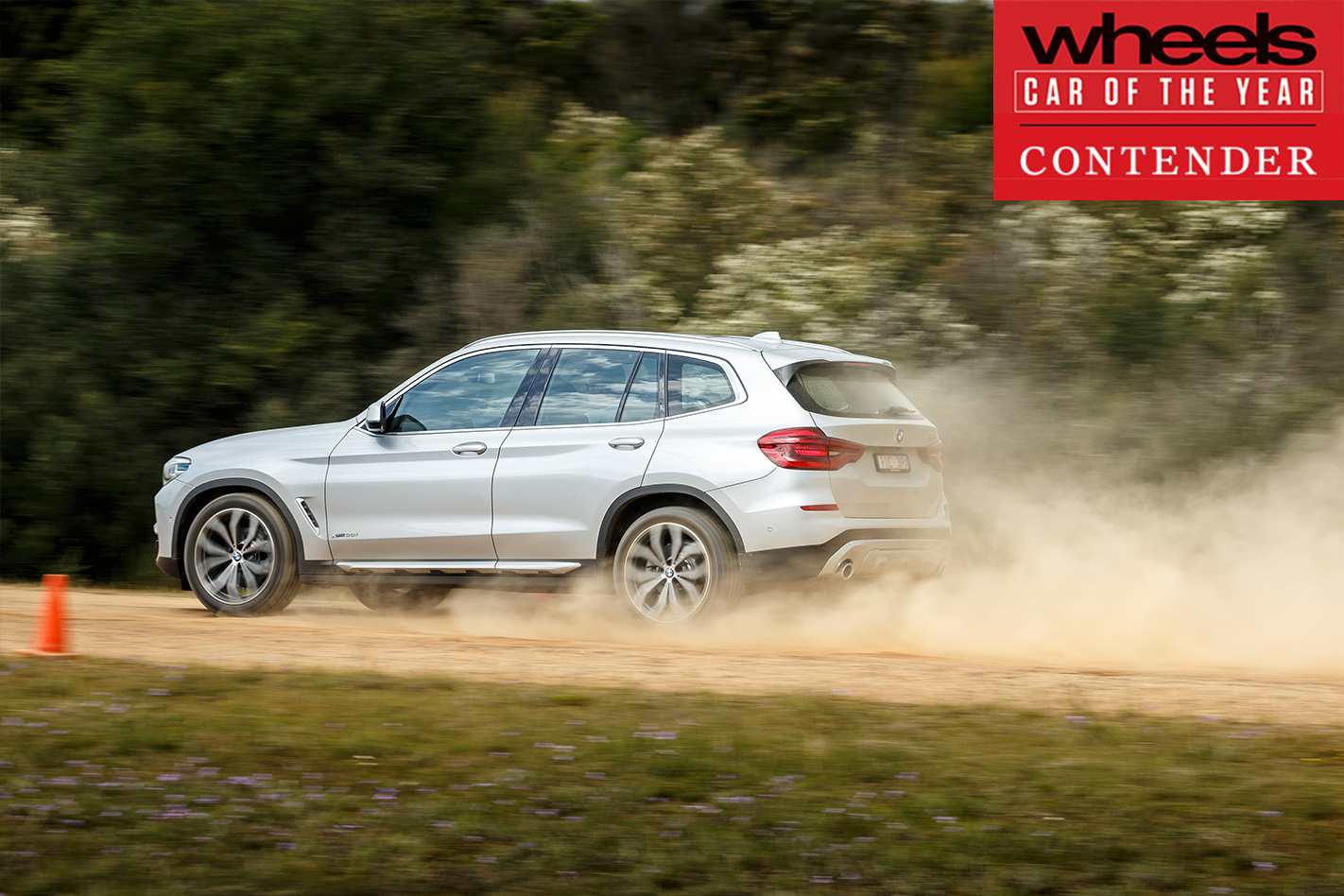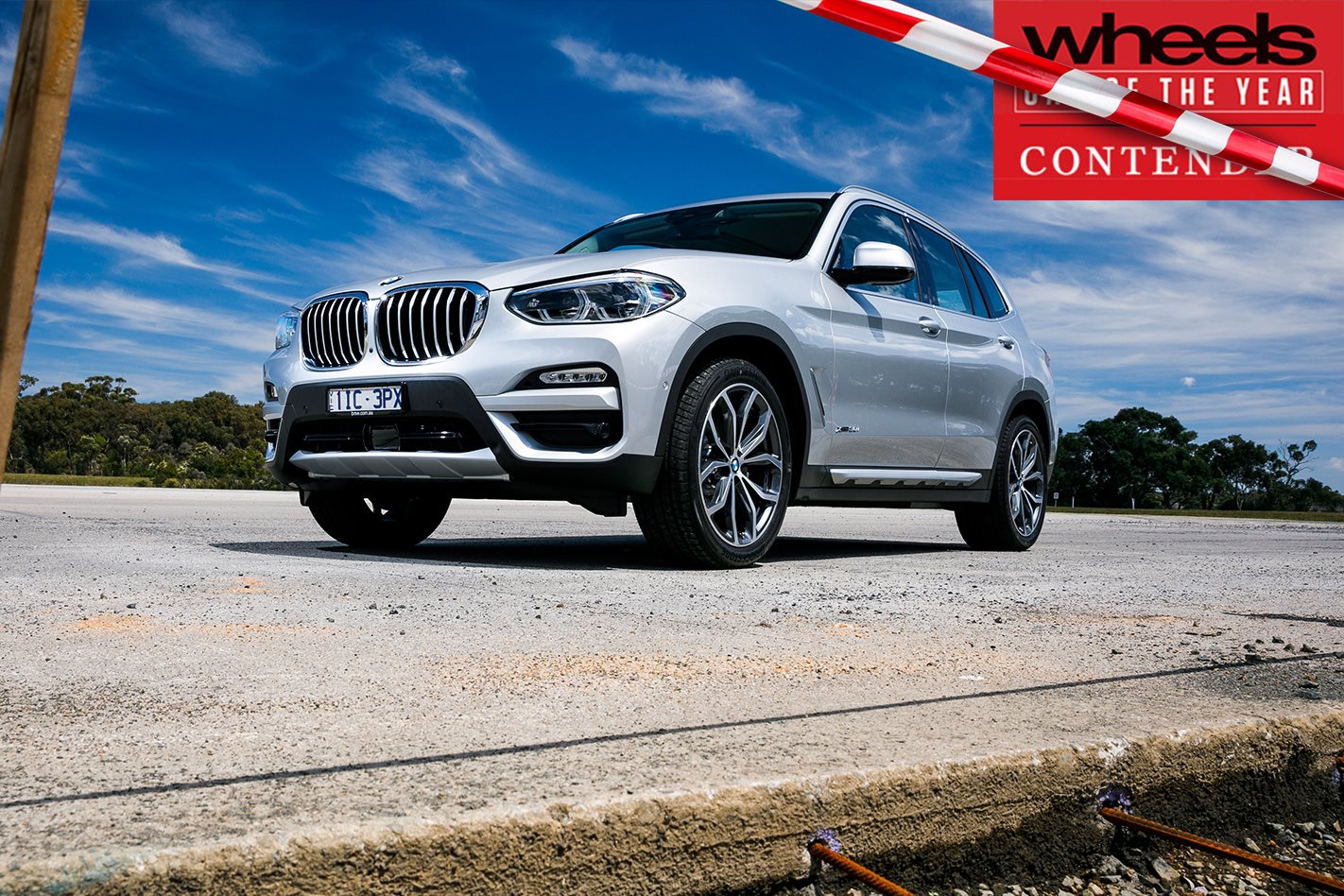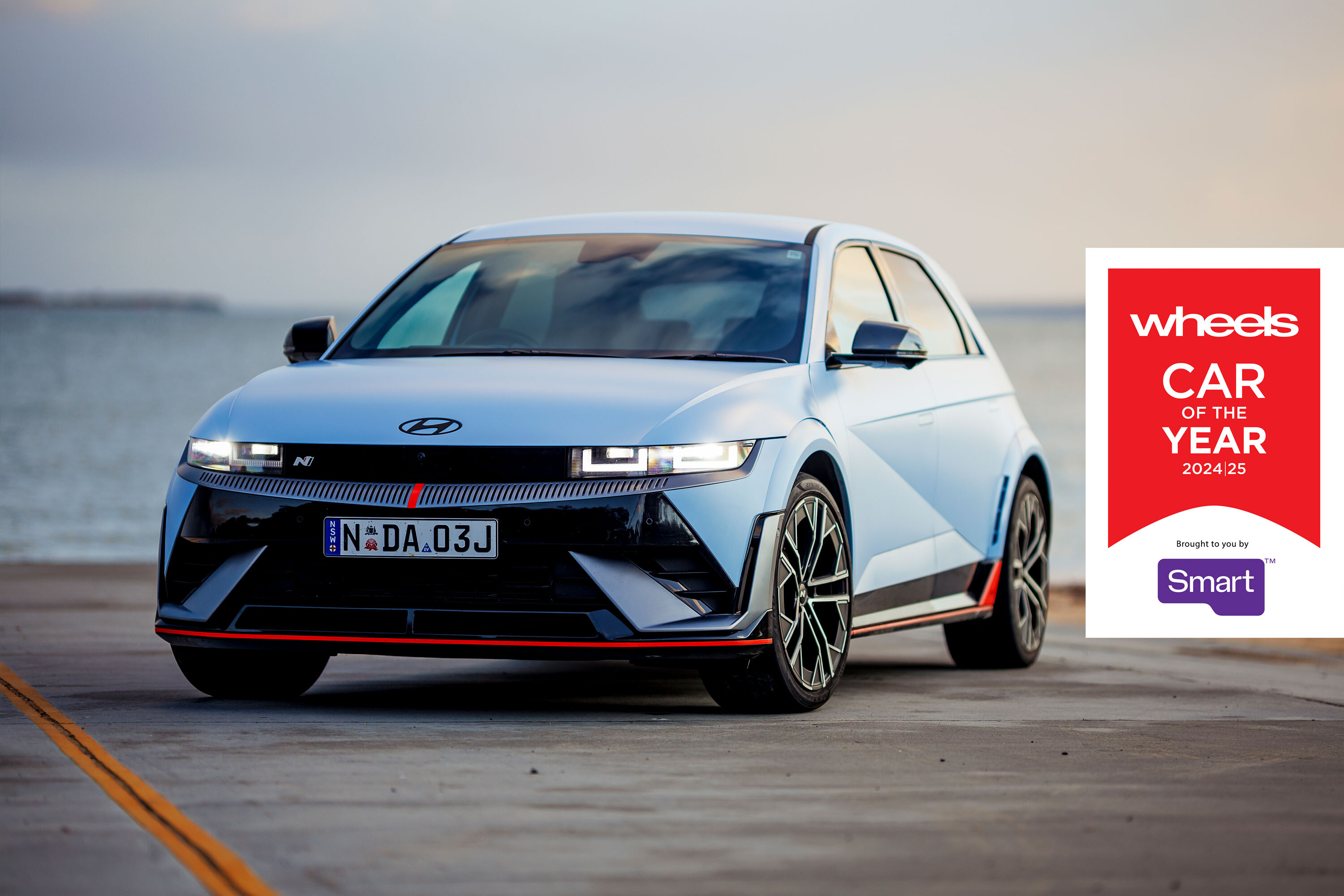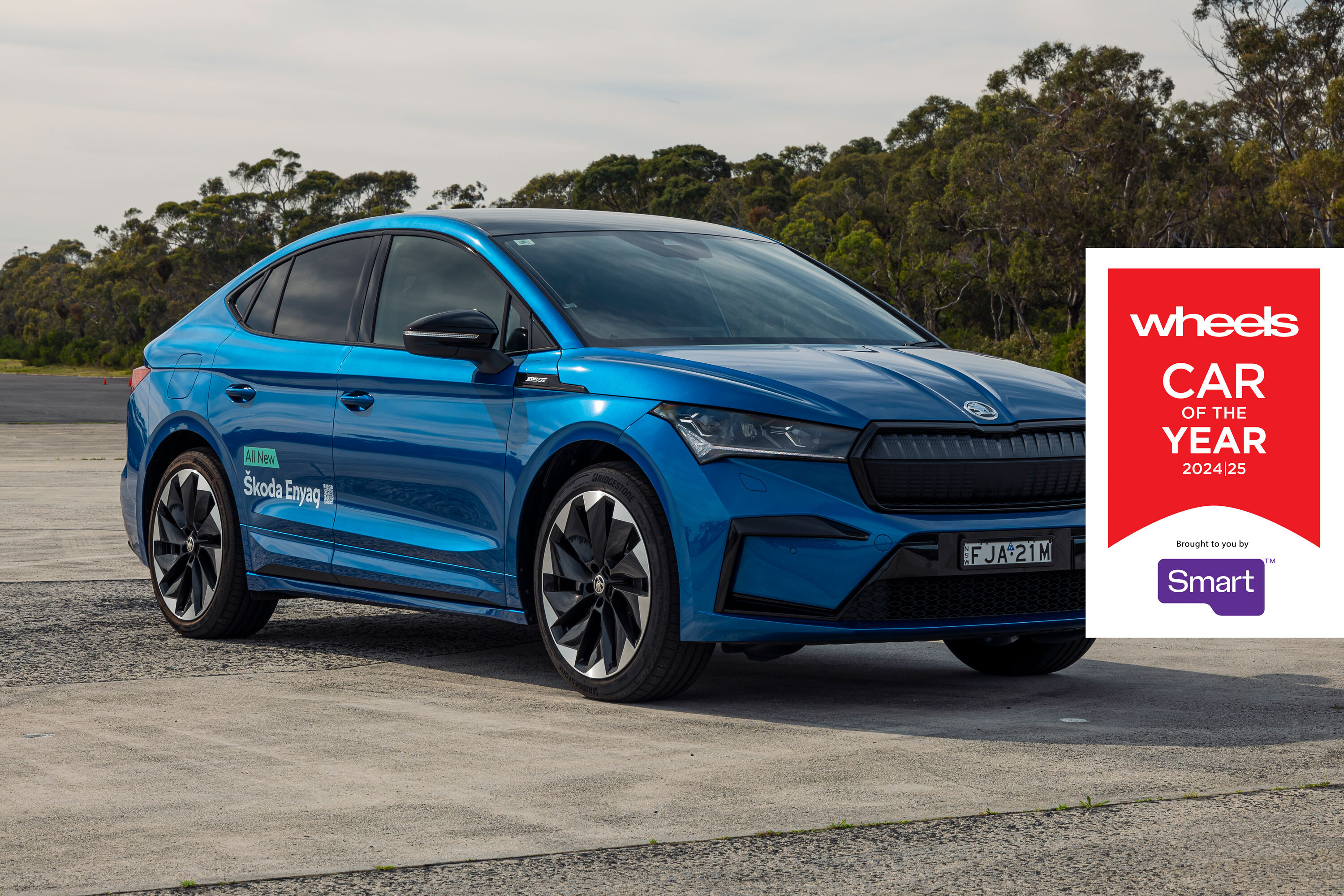The new BMW X3 is the first to break the link to the 3 Series that’s implied in its name.
Instead, the third generation of BMW’s mid-size SUV uses the same building blocks that provide the foundations for the new 5 and 7 Series. It’s a change that brings increases in both size and sophistication.
Its growth makes the new X3 larger in every key dimension, with the exception of height, than the first X5. Naturally enough, the new X3’s interior is roomier than the model it replaces. In answer to persistent carping by critics, BMW chose to invest the extra centimetres in the rear seat. It’s now spacious back there, but the size of the X3’s cargo compartment remains unchanged.
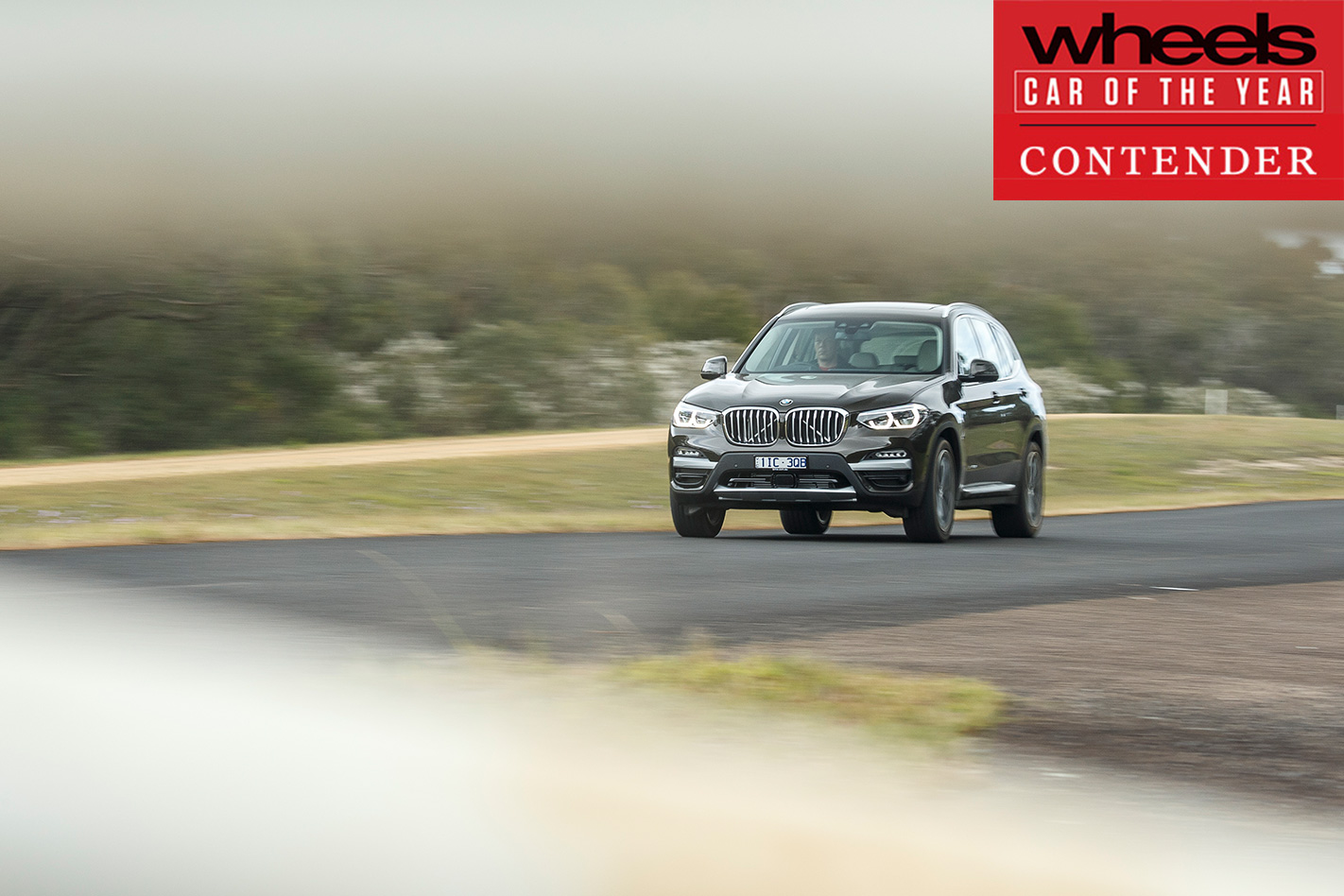
As it utilises the same electrical architecture as BMW’s big sedans, the X3 comes equipped not only with an impressively flexible infotainment system, but also the latest generation of the company’s advanced safety and driver-assistance technology.
BMW’s AEB passed the tests conducted during COTY, which involved driving at sedan and ute rear ends at a variety of speeds. The X3 also stopped well, although its ESC was sluggish in reacting to some dirt road slides.
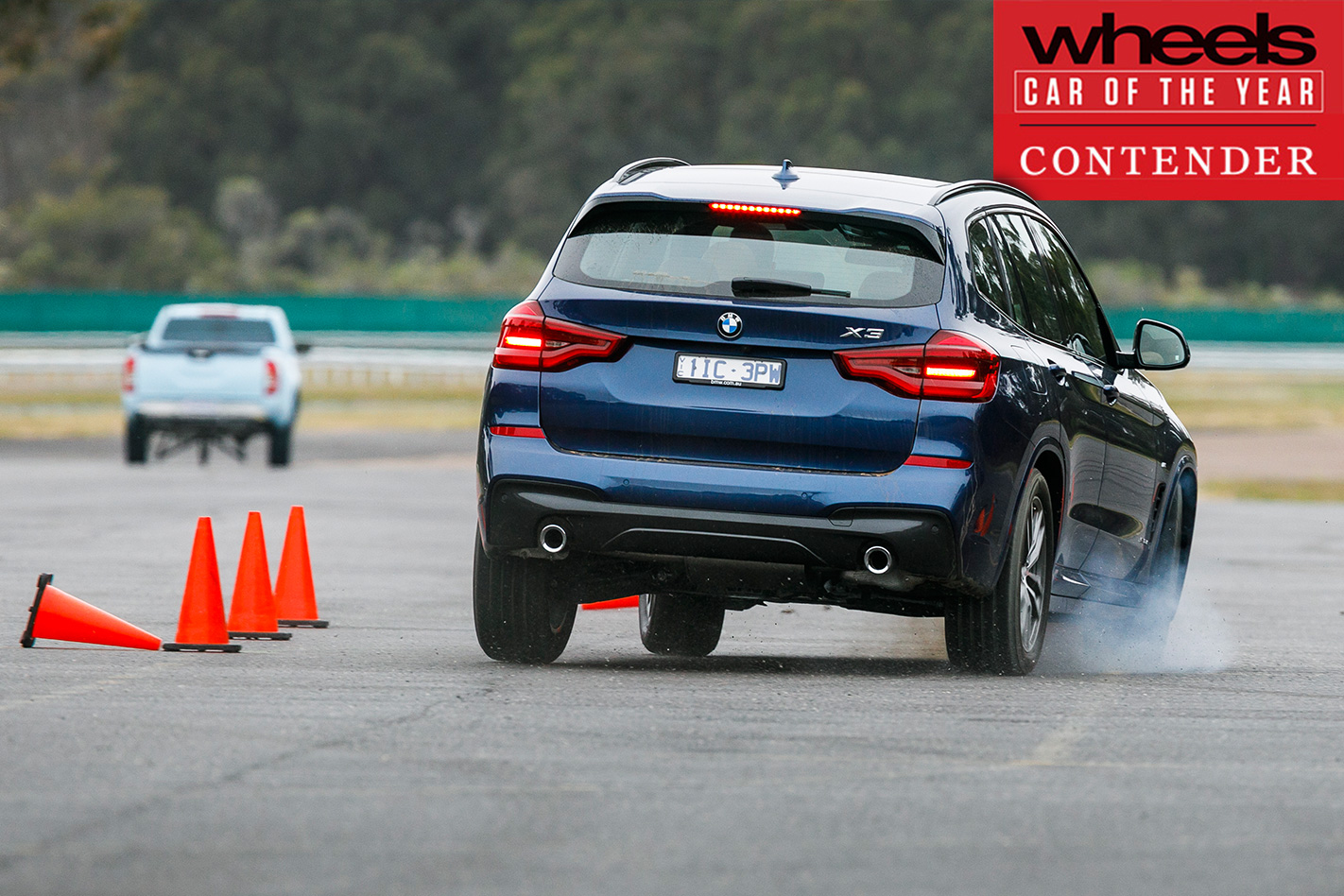
Only two of the seven COTY judges had driven the four-cylinder turbo-diesel 20d when its check-engine warning light came on. BMW advised it shouldn’t be driven, so it was withdrawn from further participation.
Each of the COTY-participating X3s came heavily optioned, with around $15,000 of extras on top of already hefty basic price tags. Adaptive dampers were included on all three. This optional technology helps deliver capable, if not especially involving, handling. For an SUV. But some judges felt that the ride quality in Comfort wasn’t comfy enough, and that the steering felt a bit too remote.
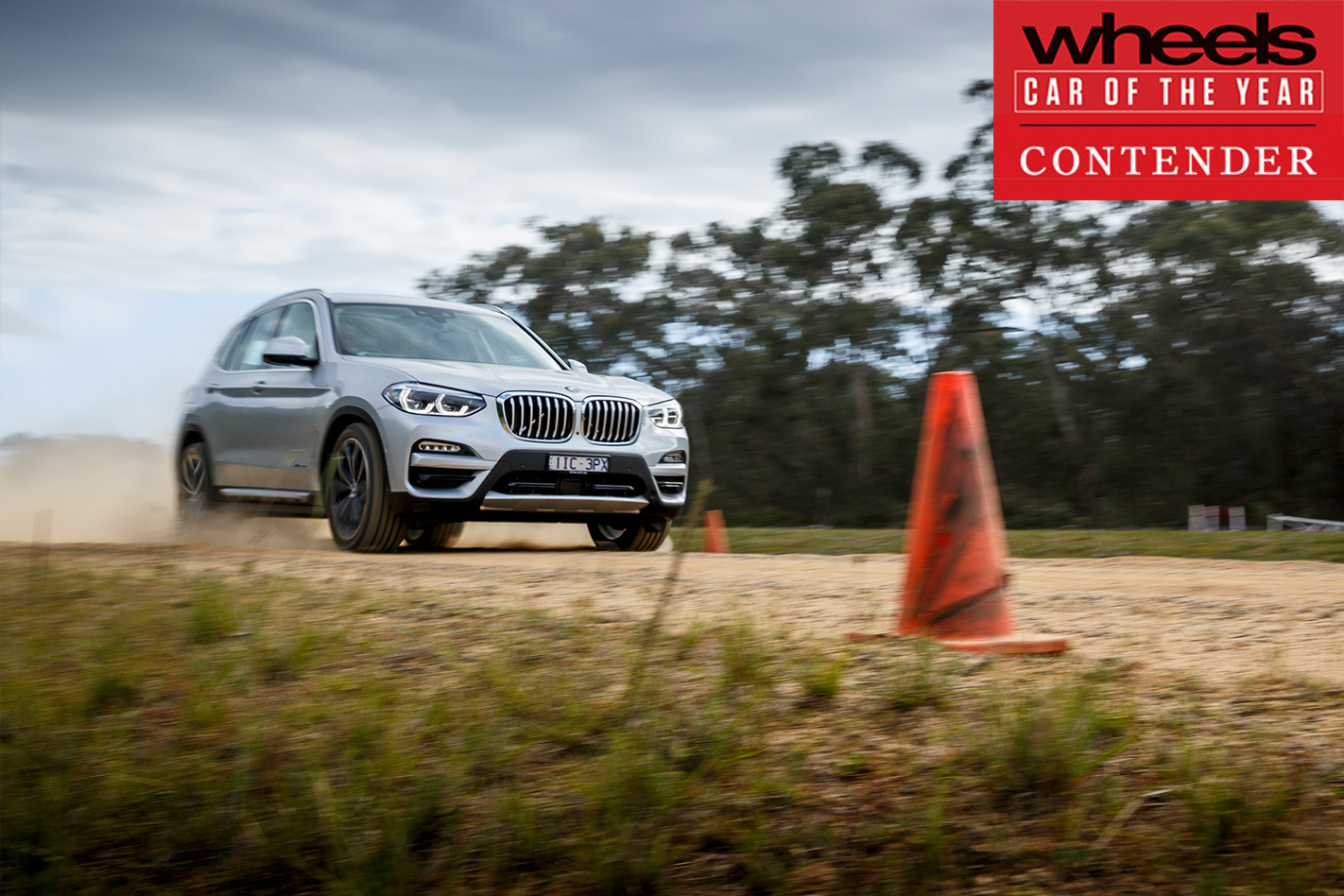
In a world where premium SUV is another way to spell high profit margins, the new X3 is a hugely important model for its maker. The newcomer is a definite improvement over the version it replaces and, at long last, genuinely competitive in its market segment. But other brands are also doing their best to win the premium medium SUV race and one, at least, is doing better than BMW.
X-pansion plans
The X3 family will grow quickly, starting early this year with the high-performance M40i. It features a 265kW turbocharged version of BMW’s lovely 3.0-litre in-line six petrol and uprated suspension and braking systems.
